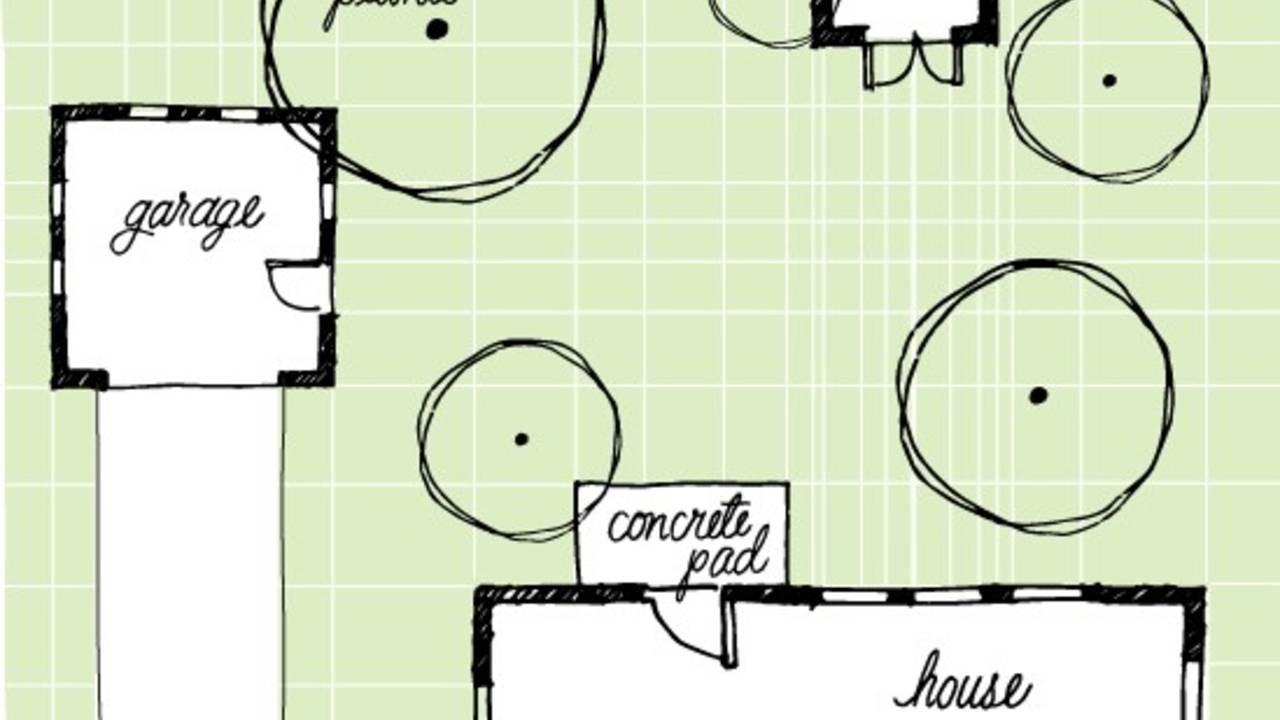How to Unify Your Landscape

Though some of us may have an empty yard when we start our garden design, most do not. I receive many questions about how to work with existing trees, shrubs, sheds or other odds and ends in our yard that need to be unified into a cohesive design.
Though there are several ways to unify a design, I'd like to share a simple grid method of pulling the seemingly disjointed items in your landscape together. I created a short video showing the entire process, plus included additional information and images below.
To start, create a basemap with current structures, plants and other items you'd like to keep. If there are items you intend to remove, you don't need to include those. Focus in on a smaller area to start...like the front or back yard.

Place tracing paper over your basemap and create a grid on your site. To create the grid extend lines from the corners of all the buildings, then extend view lines from windows and doors, then extend lines for circulation patterns. You can even color code each set of lines if that helps. I'll show a 90 degree grid for my example, but you can also try 45 degree angles.

Use this grid to think about where potential bedlines, hardscapes and lawns can be. Try to keep existing plants in a planting bed - this will help determine where the proposed beds will be. Don't think about the details of individual plants, instead keep your focus on spaces...including patios, lawns, vegetable gardens, or bed areas. Below are two examples of how to create these spaces using a grid, but there are many more options!
Keep in mind maintenance (for instance, are you okay with 90 degree corners in your lawn?), accessibility of important features, varied topography, etc. There is a lot to think about, but to start, keep it simple and don't overwhelm yourself. Design is a cyclical process. Start, explore, review, and start again if needed.




A grid lends itself well to a geometric design, as you can see in these examples, but you can also explore curvilinear spaces. I'll cover that style in a future post.
You might need to go through several options until you like the combination of planting beds to open spaces. Give yourself time to explore and enjoy the process!
(One more note...this is only one way to unify your landscape. Other ways include repeating elements such as colors, plants, materials, and forms. I hope to share these in future posts.)





